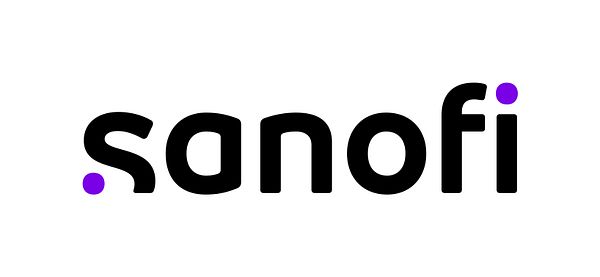Pressmeddelande -
A high proportion of hypertensive patients achieved blood pressure treatment goal with irbesartan-based combination therapy, findings show
Contact:
sanofi-aventis
Jean Marc Podvin
+33 (0)1 53 77 42 23
Salah Mahyaoui
+33 (0)1 53 77 40 31
+33 (0)6 73 68 78 88
Bristol-Myers Squibb
Rob Hutchinson
+1 609 252 3901
+1 609 271 2704
Recent clinical findings have demonstrated that a large majority of hypertensive patients who failed to achieve blood pressure goal on monotherapy can be helped to attain goal with the angiotensin-II receptor antagonist irbesartan combined with a diuretic.
Results of the INCLUSIVE1 (IrbesartaN/HCTZ bLood pressUre reductionS in dIVErse patient populations) and CO.S.I.M.A.2 (COmparative Study of Efficacy of Irbesartan/HCTZ with Valsartan/HCTZ Using Home Blood Pressure Monitoring in the TreAtment of Mild-to-Moderate Hypertension) studies were presented to the international media at the European Society of Hypertension meeting in Milan. Both reported the efficacy and tolerability results of a combination of irbesartan and hydrochlorothiazide (HCTZ).
In the INCLUSIVE trial conducted in the United States, 77 percent of the patients achieved their systolic blood pressure goal with irbesartan-based combination therapy. Hypertensive patients in the INCLUSIVE trial included those in whom goal attainment is particularly challenging, such as the elderly, people with diabetes and people with metabolic syndrome, and those patients that were not at goal with various monotherapy antihypertensive agents.
The INCLUSIVE study shows that treatment with irbesartan/HCTZ combination therapy leads to a substantial reduction in systolic blood pressure (SBP), allowing SBP goals to be attained in the majority of a population that is uncontrolled with hypertensive monotherapy, said Henry Black, MD, associate VP for Research and Chairman, Department of Preventive Medicine, Rush University Medical Centre, Chicago, a member of the Steering Committee for the INCLUSIVE trial.
In another trial, CO.S.I.M.A., which was conducted in France, the combination of irbesartan 150 mg and HCTZ 12.5 mg was significantly different from valsartan 80 mg and HCTZ 12.5 mg in lowering home blood pressure monitored systolic blood pressure over a period of eight weeks (13.0 mmHg vs. 10.6 mmHg, p less than 0.01).
Many patients require more than one agent to achieve blood pressure target goal, said Professor Roland Asmar, of the Cardiovascular Institute in Paris, and principal investigator of the CO.S.I.M.A. study. Thats why in the CO.S.I.M.A. trial we compared two combination therapies irbesartan/HCTZ versus valsartan/HCTZ in hypertensive patients who had been unsuccessfully treated with monotherapy.
Neil Poulter MD, Professor of Preventive Cardiovascular Medicine, Imperial College at St Marys Hospital, University of London, introduced the scale of the clinical challenge presented by hypertension. Professor Poulter also reviewed recent progress made in improving rates of diagnosis of patients with high blood pressure, as well as improvements in ensuring that these patients are treated, and also subsequently controlled. As recently as a decade ago, fewer than 8 percent of hypertensive people in Europe had their blood pressure controlled to internationally recommended levels. Recent research in the UK suggests that this situation has improved considerably, but that more than 70 percent of people with high blood pressure are still uncontrolled. This is still a major issue in the rest of Europe as well as worldwide.
We have taken great strides in improving the management of hypertension but we need to do better, particularly by getting more treated patients to their target level of control. Any treatment that helps achieve this goal deserves serious consideration by physicians throughout Europe, added Professor Poulter.
Results from INCLUSIVE and CO.S.I.M.A. demonstrate the value of irbesartan combination therapy in improving blood pressure goal attainment in patients with hypertension, concluded Professor Claudio Borghi from the University of Bologna and co-chairman of the meeting. These results should raise the expectations of control for hypertensive patients in Europe.
Awareness, treatment and control
Data drawn from European surveys in the late 1990s illustrate how many patients with hypertension were aware of their hypertension, how many were treated for it, and also how many were in control.3 The results were compared with similar surveys of hypertensive patients in North America.
Patients aware of their hypertension
Aware patients
on treatment
Treated patients at goal
Hypertensive patients at goal
Europe (1990s)
42%
65%
28%
8%
N America (1990s)
66%
67%
51%
23%
About INCLUSIVE
The INCLUSIVE trial enrolled patients with high blood pressure who were not adequately controlled on a single antihypertensive therapy. INCLUSIVE enrolled a broad range of hypertensive patients often considered difficult to get to blood pressure goal. Of the 1,005 enrolled participants, more than 100 patients were enrolled in each of several pre-defined subgroups, including African-American, Hispanic/Latino, those with metabolic syndrome, those with type 2 diabetes mellitus and the elderly. Additionally, 52% of the participants were women.
The trial examined the effect of the combination of irbesartan and hydrochlorothiazide treatment on participants systolic blood pressure from baseline to the end of the trial (18 weeks). After enrolling, the participants received a placebo for at least four weeks, then received hydrochlorothiazide 12.5 mg alone for two weeks, followed by eight weeks of the combination of irbesartan 150 mg and HCTZ 12.5 mg and then eight weeks of the combination of irbesartan 300 mg and HCTZ 25 mg.
The results of the primary endpoint of the trial showed an average reduction of 21.5 mm Hg in systolic blood pressure. This relevant reduction allowed 77% of patients previously not at goal to reach their systolic blood pressure goal. Also, the participants averaged diastolic blood pressure reductions of 10.4 mm Hg. Diastolic blood pressure was at goal in 83% of the participants.
More than half of the participants were at SBP goal after 10 weeks in the study, when they had been treated with the combination of irbesartan 150 mg and HCTZ 12.5 mg. At this point, 56 and 72% of the participants were at systolic and diastolic blood pressure goals, respectively.
Irbesartan was generally well tolerated in the INCLUSIVE study; the most common drug related adverse event was dizziness, which occurred in 3% of patients.
The INCLUSIVE trial results were presented at the American Society of Hypertension (ASH) meeting on May 17, 2005, and have been submitted for peer-review publication.
The principal investigators of INCLUSIVE are Dr. Joel Neutel, MD, Orange County Research Center, California, and Elijah Saunders, MD, professor of medicine, cardiology and hypertension and head of the section of hypertension at the University of Maryland School of Medicine in Baltimore. 119 U.S. centers participated in the prospective, open-label trial.
About CO.S.I.M.A.
CO.S.I.M.A. The results showed that after eight weeks of treatment with irbesartan 150 mg/HCTZ 12.5 mg (CoAprovel®), this combination was statistically different in its lowering effect on arterial blood pressure compared to the valsartan 80 mg/HCTZ 12.5 mg combination. The CO.S.I.M.A. study intention to treat results include 449 hypertensive patients who when given 5 weeks of treatment with 12.5 mg of the diuretic, HCTZ, were not at goal and were then randomised to treatment with either irbesartan or valsartan fixed combination therapy. Patients enrolled in the COSIMA study measured their own blood pressure three times in the morning and three times in the evening for 5 consecutive days. Self-monitoring for all daily measurement showed an average difference between irbesartan combination and valsartan combination of 2.4 mmHg for SBP (P=0.0094), and 2.0 mmHg for DBP (P=0.0007).* In the morning, the average difference was 2.9 mmHg (P less than 0.05) for SBP and 2.3 mmHg (P less than 0.05) for DBP. CO.S.I.M.A. also showed that with an irbesartan-based combination therapy there was a statistically significant difference in normalized blood pressure rate of 50% versus a normalized blood pressure rate of 33% with a valsartan-based combination (p less than 0.0001). Overall, both treatments were well tolerated.
* intention to treat (ITT) results
Both the CO.S.I.M.A. and INCLUSIVE studies were funded by the Bristol-Myers Squibb/ Sanofi-Aventis partnership. They are the makers of the irbesartan-HCTZ combination treatment (Co-Aprovel, Karvezide, Avalide ).
About Bristol-Myers Squibb
Bristol-Myers Squibb is a global pharmaceutical and related health care products company whose mission is to extend and enhance human life.
About Sanofi-Aventis
Sanofi-aventis Group is the worlds third-largest pharmaceutical company, ranking number one in Europe. Backed by a world-class R&D organization, sanofi-aventis is developing leading positions in seven major therapeutic areas: cardiovascular, thrombosis, oncology, metabolic diseases, central nervous system, internal medicine, and vaccines. The sanofi-aventis Group is listed in Paris (EURONEXT: SAN) and in New York (NYSE: SNY)
Notes and References:
1. Neutel J, Saunders E et al The Efficacy and Safety of irbesartan/HCTZ 150/12.5 mg and irbesartan/HCTZ 300/25 mg in patients with hypertension uncontrolled on monotherapy American Society of Hypertension 2005 18(5): p236.
2. Bobrie G et al A Home Blood Pressure Monitoring Study Comparing the Antihypertensive Efficacy of Two Angiotensin II Receptor Antagonist Fixed Combinations American Journal of Hypertension (in press)
3. Wolf-Maier K, Cooper R, Kramer H, et al, Hypertension Treatment and Control. Hypertension. 2004;43:10-17


